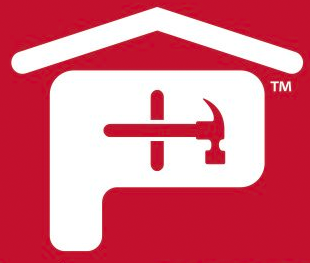You have come to the realization that your old, faded, and crumbling cedar wood shake roof must be replaced. Cedar shakes, and wooden shingles, may have been the favorite choice 100 years ago, but their time has passed. Many homeowners love the look of a wooden roof, but it is costly to buy, install, and maintain. However, the most serious reason cedar wood shakes and wood shingles should be avoided is that they are a dangerous fire hazard. Although some are are treated with a fire retardant, that retardant deteriorates over time.
Homeowners should consider the possibility of fire devastation. A wood roof that would serve as kindling to a fire should not be the primary protection for a home. This is especially a concern if that home is in a region prone to lightning strikes and wildfires. Wood shake roofs were blamed for helping spread the devastating Waldo Canyon Fire in Colorado. The city of Ketchum, Idaho, is considering a ban on wood shakes and shingles for new construction after the massive 174-square-mile Beaver Creek Fire, which heavily damaged homes in that central Idaho area. There have been many cases in which even though a fire line was cut around a house to stop an approaching fire, hot embers landed on the roof and ignited the structure. The latest version of the International Fire Code doesn't ban wood shingles, so local governments must enact such a ban.
One option that may be considered by homeowners is to cover an old roof with new roofing materials. There are several drawbacks to doing this with both wood shake and wood shingle roofs. In the International Residential Code (IRC) is a ruling, RC R907.3, which describes the ordinance for re-covering versus replacement: New roof coverings shall not be installed without first removing existing roof coverings where any of the following conditions occur:
- Existing roof or roof covering is water-soaked or deteriorated to the point that the existing roof or roof covering is not adequate as a base for additional roofing.
- Where the existing roof covering is wood shake, slate, clay, or asbestos-cement tile.
- Where the existing roof has two or more applications of any type of roof covering.
The fire hazard caused by covering an old roof is that multiple layers make it hard for firefighters to vent the roof fast enough by creating holes in it.
Fire concerns are not the only reason to choose different roofing materials to replace wood shake and shingle roofs. They can be extremely hazardous to walk on when wet; something a homeowner might do be when trying to locate a leak. Wood roofing also requires regularly scheduled cleaning and treatment to keep it free of fungus. Wood tends to curl and split, which creates leaks. That is a concern in places that have lots of rain, immediately followed by long periods of sunlight.
Wood shakes and shingles are much more expensive than many other optional materials, too. Manufacturing and shipping expenses are costly, and installing wood shakes and shingles is labor intensive. This type of roofing work requires an almost artistic skill and is not a for the DIY homeowner. Each one covers a fairly small area and has to be individually positioned and installed with two nails. Extreme care must be taken to select and cut each piece, and avoid incorrect nail placement. Wooden shingles and shakes also have a fairly short life span, typically 15 years or less depending on the climate. All of these factors add up to huge lifecycle costs.
So if the old wooden roof has to go, replace it with attractive, common sense materials. Consider re-roofing with a high-performance asphalt shingle, such as the ones produced by Atlas Roofing. They offer an easier installation process, much less maintenance, a vast variety of colors and styles, and lower costs. These shingles are much more durable and far safer than wood shingles and shakes.
Asphalt gives support for a shingle’s weather-resistant components and provides it with strength. Properly installed, asphalt shingles can last up to 30+ years. The surfacing material offers protection from impact and UV rays, plus improves resistance to fire. Atlas Roofing adds 3M™ Scotchgard™ Protector to its three HP (High Performance) asphalt shingle lines: StormMaster® Shake and Pinnacle Pristine®. This protection resists stains caused by mildew, mold, and algae. These shingles retain their original look for years and are marketed with the slogan, “The color you choose is the color you keep.”
Those who insist on using genuine wood roofing keep bringing up the subject of appearance. Architectural asphalt shingles by Atlas look great and actually resemble wood. Manufactured using two layers bonded with a special sealant, these shingles add an eye-appealing three-dimensional appearance effect to a roof. Atlas asphalt shingles have the look of more expensive, natural materials, such as cedar shakes, slate, or tile. In fact, these fire-retardant, impact-resistant shingles are found on million-dollar homes. HP42® shingles are available in many different textures and a wide variety of colors, not matched by wood shakes. Because they are flexible, yet sturdy, Atlas asphalt shingles are compatible with many roof designs.
In addition to fire, Atlas HP42® asphalt shingles can resist hurricane-force winds. They are backed with a strip of factory-applied adhesive that is activated by the sun's heat after installation. This seal provides the HP42® line with such resistance to wind uplift that they are warranted to 130 mph.
Don’t wait for a wildfire or hurricane to strike. Have your wood shake or wood shingle roof inspected now. If replacement is recommended, look into the many possibilities of Atlas architectural asphalt shingles.



 Gear!
Gear! PRO LOGIN
PRO LOGIN